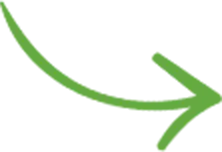Contents
I’m answering your questions about photography websites, business, marketing, SEO and more.
You can ask me anything. I’ll try to answer within 24 hours, and the most useful questions get featured here on the newsletter too. Need any help with your website? Don’t hesitate to write, I’m all ears.
Thanks to Ricardo, Ken, Shannon & Anna for these topics.
Check out my answers below, and jump in with your own thoughts by sending me a message or leaving a comment below.

“How does website caching work?”
Full question with inline answers:
“While I understand the idea of caching – it’s a place to store information temporarily to speed up the access process – I really do not understand caching. Is this storage location on my computer? On search engines?”
The cache sits on in the website, basically on the hosting server where the website is hosted. The caching plugin usually creates a “cache” folder right where the website sits, and server pages from here.
Here’s how it works in a nutshell:
Usually, when a visitor is trying to load a page on a WordPress site, WordPress has to gather the code from all of its various templates and plugins and then put everything together in one HTML file, sending that to the visitor’s browser. That can take time, depending on how complex your site is and how fast the hosting provider is.
The caching plugin simply creates a copy of that final HTML code, saves it, and server it directly for all future visitors, saving WP from having to do all that processing again.
“If I clear the cache from my website’s dashboard, does that mean if a returning visitor goes to my website, they will get a slower download than if I did not clear the cache?”
Yes. But that’s not a cause of worry. Because only the first person to visit your site (after you clear your cache) will be slower. That’s when the cache file is formed for that page. All future visitors will get the faster cached version afterwards.
“How often should I clear the cache?”
Most cache plugins are quite smart these days. The cache automatically expires after a few days, and is rebuilt from time to time. So you probably don’t have to clear the site cache, especially when just changing the content (updating pages, etc.), because the plugin does that for you automatically.
The only scenario when you should clear the cache manually is when you make changes to the WordPress theme or install a new plugin. Basically any changes that can affect the whole site, not just one single page.
“If I clear the cache, should I have google walk the pages again?”
No, that has nothing to do with it. Google doesn’t care if it indexes a fresh page or a cached one. They have the same content.
You only ask Google to reindex some pages (in Google Search Console) after you make content changes. When you want Google to “see” your new content faster.
“Could you recommend a good web host for building a WP-based site?”
Full questions: “Could you recommend a few good web hosts for building a WP based site? I don’t anticipate huge traffic but would like a reputable and reliable host. Oh and budget conscious too, of course.”
WP Engine is my favorite hosting provider by far, but I wouldn’t call it “budget conscious” :-)
There are many hosting providers that offer cheaper hosting at around $5/month, including big players like GoDaddy, BlueHost or DreamHost. My recommendation is to go with HostGator because they have very fast servers and the WordPress admin runs very well on it (unlike the other companies I mentioned which impose strict resource limits and then push for upgrades). HostGator’s cheap Hatchling Plan should be more than enough for your website needs.
A more detailed answer in this new article: Best WordPress hosting for photographers: budget vs premium providers, what features to look for, and how to migrate your photo site
Need help managing your WordPress site?
Save time & money by protecting your website and having me do ongoing testing, maintenance, prevention & iterative improvements.
Check out my website maintenance plans & technical services for photographers:
“Should paid links be using no-follow?”
Full question: “I get so many requests these days for paid posts and links, that I’m gonna scream. That being said, I’m trying to put together a canned reply but want to know the legality of publishing the articles (if they are acceptable in content) and if it is okay to use do-follow links or should I be using no-follow. Pretty sure everyone wants do-follow.”
With a large amount of traffic, you do get a ton of emails like that. I know it’s annoying, but it’s a good problem to have :-)
They all want do-follow links, yes, because they surely all keep an eye out for SEO too.
You asked about “legality”: from what I know, there are no legal implications to using do-follow or no-follow. It’s just about “best practices”.
You’re right about Google recommending “no-follow” for any type of paid link (but there are exceptions, you won’t be penalized for it).
That being said, you should indeed update any paid referral links to no-follow, only for those links where you actually get referral income. If you recommend a product/service just out of pure admiration (without a referral link), you can keep them do-follow.
Check out this page to get more details on this topic: Paid links and advertising [varvy.com]
“Do you use or recommend the WordPress Jetpack plugin?”
I’m not a big fan of the Jetpack plugin, no.
In my experience, it’s always a real performance hog, so it can really slow down the admin area on cheaper hosting providers. And all of its features can, separately, be done with other specialized plugins.
“What is the ideal image size for a website?”
Full question: “What is the ideal image size for a website? I’ve been trying to reduce the size of the images on my photography website. My images are 1500 pixels at their largest dimension, 72 dpi and saved at 6 quality jpg. Some of the images are still in the 300-400 kb range. Is that too large? If so, what can I do to make the size smaller without hurting image quality too much?”
On a large 27″ monitor, full-width images get shown at 2000+ pixels (width), so 1500px is probably not enough. Aim for 2000px in your case.
Don’t forget that DPI is irrelevant for the web! Only pixel dimensions matter on your site.
The 300-400 KB range is great, no need to make them smaller than that. And since you’ll now be making them at 2000px, just aim for anywhere around 500KB.
Sometimes, even if you save them at a lower JPG quality setting, you’ll still get files around 800-900 KB. That’s OK, don’t worry about it. Forcing the file size to be smaller would mean either resizing them smaller (and then the browser stretches them automatically on larger screens) or lowering the JPG quality setting even more (which introduces noise), so it’s kind of the same thing, it leads to more blurry images with artifacts. Not worth it.
More on the topic in my full tutorial: How to optimize images for website performance: image sizes, compression, tools & testing
Your turn: ask me anything. I’d love for this to become a valuable “repository” of answers from the entire community of photographers.
You can help with that by getting involved:
1. Ask questions. Send them to me via email or on Twitter (@foreground).
2. Answer questions yourself. If you have anything to add to any of my answers (or can answer from a different perspective), jump right in! I’ll share relevant notes with other photographers so everyone can benefit.












